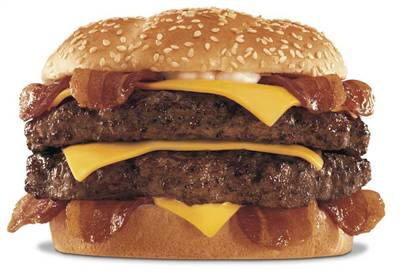
Fats
Functions of fats
· To protect internal organs
· To produce hormones (oestrogen and testosterone)
· To store and supply energy
· To produce heat
· To store and move vitamins A, D, E and K
· To form the cell membrane
· To form the myolin sheath
· Part of the nervous system and brain
Fats and oils are also known as lipids. Lipids are energy dense because they provide 9kcals of energy per 1g. 30% of your daily calorie intake should consist of fats; they are an essential part of your diet. The reason why fats and oils are not the same is because at room temperature fats are solid whereas oils are liquids.
A fatty acid is the smallest unit of fat. There are two types of fatty acids:
1. Saturated
2. Unsaturated
Saturated Fats
Saturated fats are saturated with hydrogen ions, and are solid (they have no room to move). Saturated fats are thought to be stable because they never change, even when melted their structure stays the same.
Structure of a saturated fat:
Examples of saturated fats
· Red meat
· Eggs
· Dairy products
· Poultry
· Coconut oil
· Palm oil
It is recommended by the department of health that 10 %( max) of our daily calorie intake comes from saturated fats. Saturated fats are stored as fats in fat cells.
They are then used to...
· Form cell membranes
· Improve the immune system
· Improve the health of bones
· Help to protect the Liver from some toxins
When naturally occurring toxins are stored in fat cells they have a few benefits...
· They improve circulation
· Improve health of hair, skin and nails
· Lowers cholesterol
Unsaturated Fats
Unsaturated fats are liquid at room temperature. There are two types of unsaturated fats:
1. Monounsaturated
2. Polyunsaturated
Monounsaturated
10% of your daily calorie intake should come from monounsaturated fats. Monounsaturated fats are liquids because the fatty acids are not packed closely together. This is because there is a hydrogen ion missing so they have room to pull away and curve. The carbon atom then joins with itself to form a double bond.
If a monounsaturated fat is heated it changes its structure, this is a bad thing because they are then accepted into fat cells as saturated fat. This causes damage within the cell and prevents good reactions from taking place. This happens with most processed and fried foods.
Examples of monounsaturated fats...
· Peanut oil
· Olive oil
· Almond oil
· Rapeseed oil
· Avocadoes
Polyunsaturated fats
Polyunsaturated fats have less hydrogen ions, and more than one double bond therefore making them more liquefied than monounsaturated fats and give them more space to move around. The department of health also recommends that 10% of your daily calorie intake consists of polyunsaturated fats.
Examples of Polyunsaturated fats
· Seeds
· Nuts
· Fish oils
· Sunflower oil
· Safflower oil
· Corn oil
Essential fatty acids
These are the two acids which the body does not make. These acids must be supplied to the body through your diet.
· Omega 3 e.g. walnuts, oily fish and soya beans.
· Omega 6 e.g. safflower oil, sunflower oil, sesame seeds, pumpkin seeds.
Theses acids are important because they are believed to do the following:
· Prevent blood clots from forming on artery walls
· Decrease the amount of triglycerides in the bloodstream
· Improve the function of the brain
· Reduce the swelling of joints therefore helping arthritics